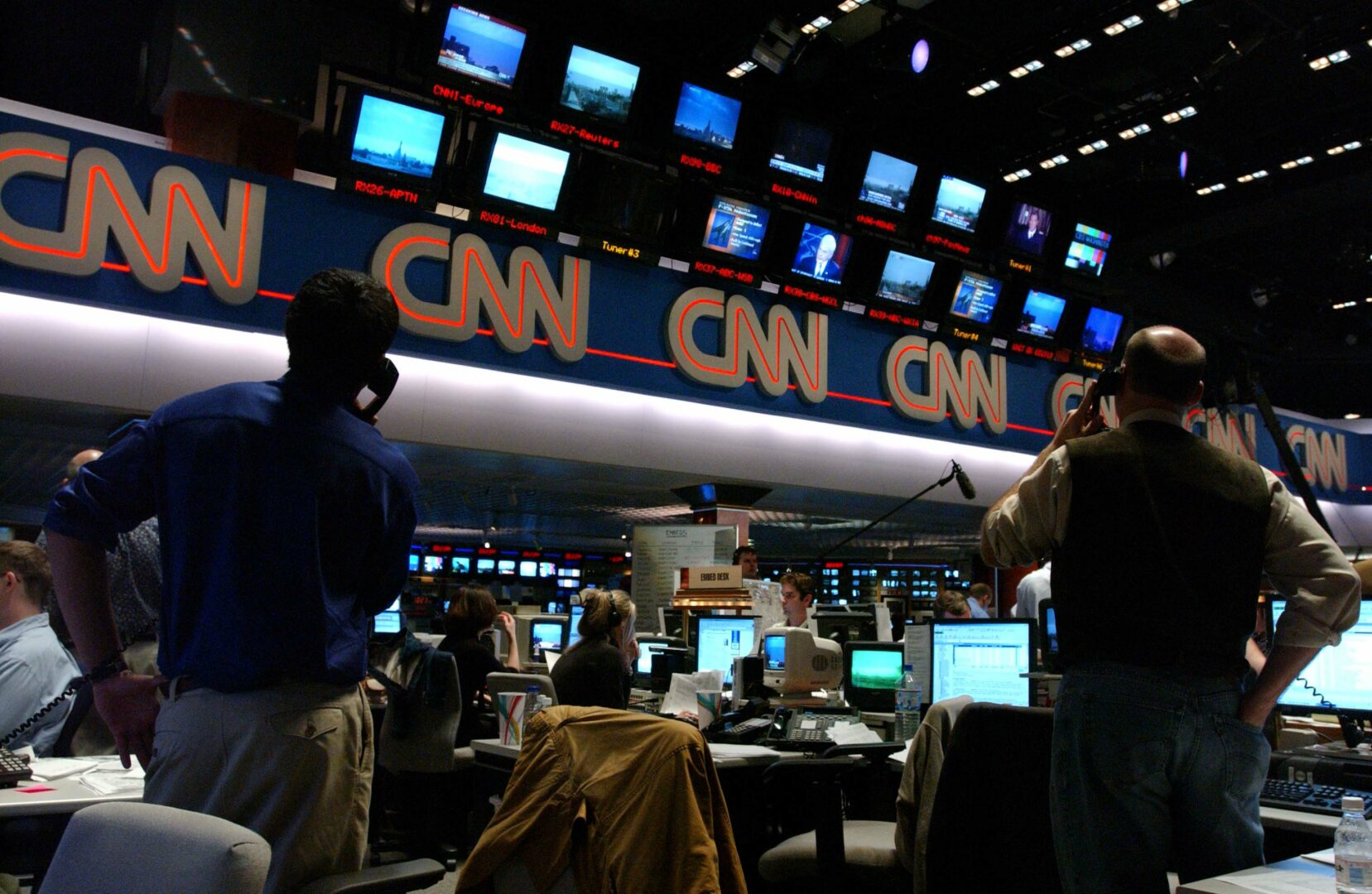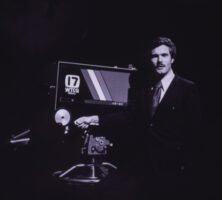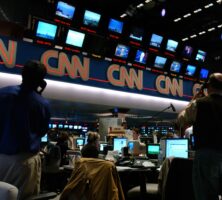Turner Broadcasting System, Inc. (TBS), a major producer of worldwide news and entertainment, originated as an unpopular vision and matured as the world’s first true “superstation.” A Time Warner company, Turner Broadcasting is the parent company of CNN (Cable News Network) and employs more than 8,000 people around the world. The success of Turner Broadcasting has set the standard in television broadcasting and established Atlanta as one of the world’s major media hubs.
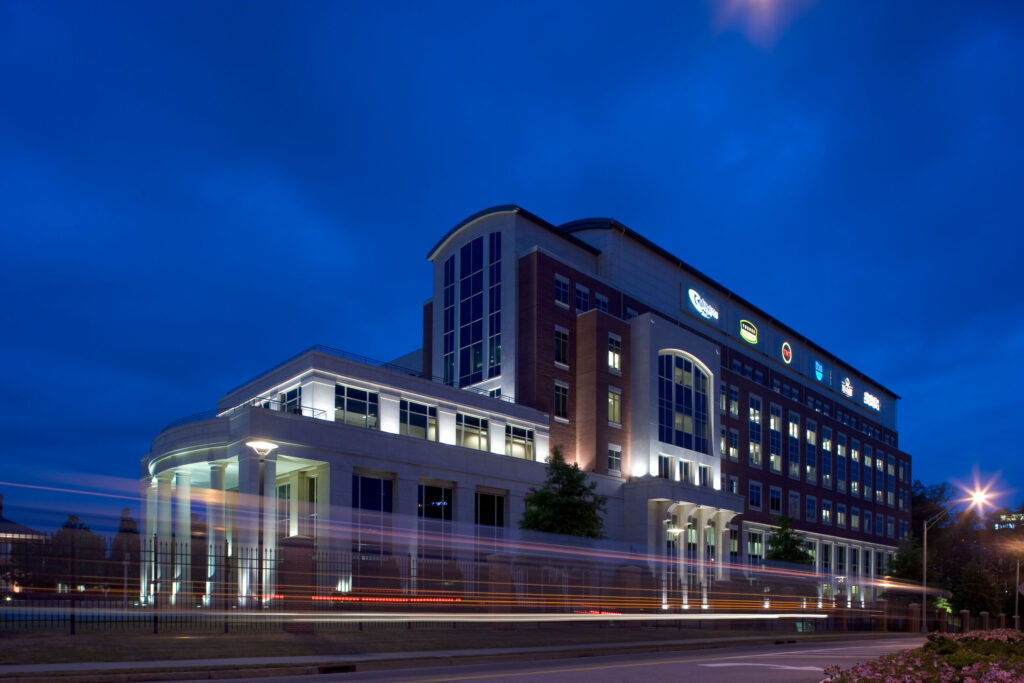
Courtesy of Turner Broadcasting
In 1970 Atlanta businessman Ted Turner, who rarely watched television, believed that if he could transform his family’s dying billboard company into a multimillion dollar success, as he had done in the 1960s, then he could do great things for a run-down, independent Atlanta television station.
Turner endured criticism that year for buying out WJRJ-TV, Channel 17, in a stock deal that valued WJRJ at about $2.5 million. WJRJ was averaging losses of $600,000 per year. Renamed WTCG after Turner Communications Group, this ultrahigh frequency (UHF) station became profitable in less than two years with its unique programming of old movies and reruns of classic television shows, such as I Love Lucy, Leave It to Beaver, and The Andy Griffith Show.
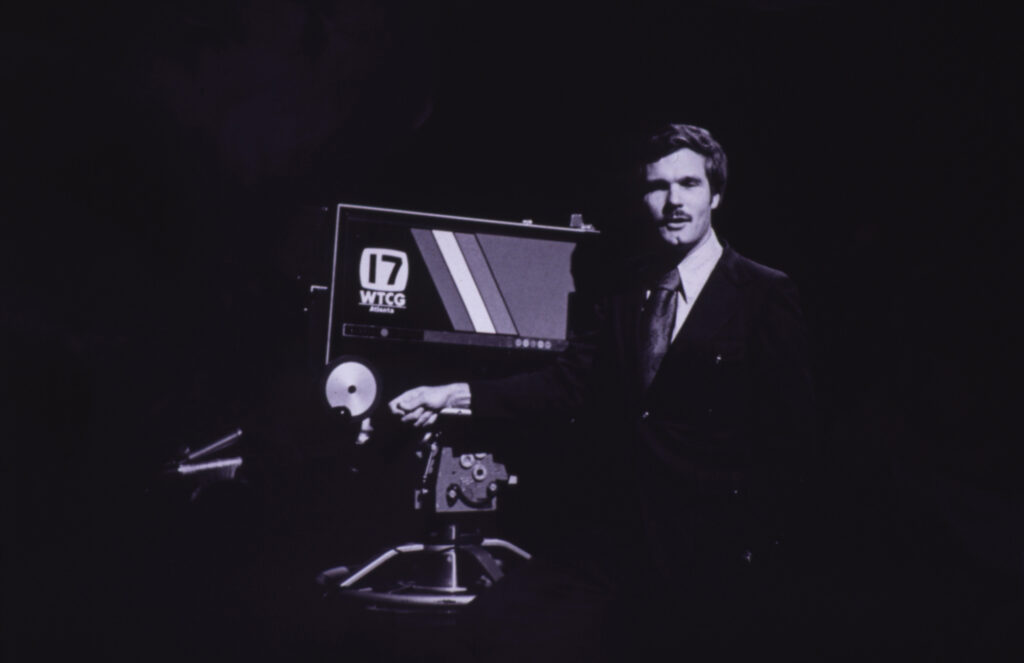
Courtesy of Turner Broadcasting
WTCG competed with varying degrees of success against the “big three” networks, ABC, CBS, and NBC. When it began broadcasting Atlanta Braves baseball games in 1973, the station took viewers away from ABC affiliate WSB-TV, which previously held broadcasting rights for the games. To keep the Braves in town and WTCG’s programming secure, Turner bought the team in 1976 for $10 million.
Longing to reach viewers with poor reception outside Atlanta, Turner followed HBO (Home Box Office) in using satellite. In 1976 WTCG became the first national superstation by distributing programming via satellite to cable systems across the country. This move, along with the airing of more than sixty Braves games per season, transformed Atlanta from a three-station market into a four-station market.
Turner then decided that his company’s focus should turn to news, which, in his opinion, none of the stations had learned to popularize among viewers. On June 1, 1980, Turner Broadcasting launched Cable News Network (CNN), the first twenty-four-hour all-news television network, which reached 1.7 million homes. Again, critics mocked Turner’s move, as low ratings from local stations suggested that viewers did not want more news. But Turner trusted his instincts and proved himself in the 1980s, as viewers glued themselves to CNN’s coverage of the shooting of U.S. president Ronald Reagan in 1981, the explosion of the Challenger space shuttle in 1986, and other newsworthy events. Today, CNN services reach nearly 1 billion people around the world.
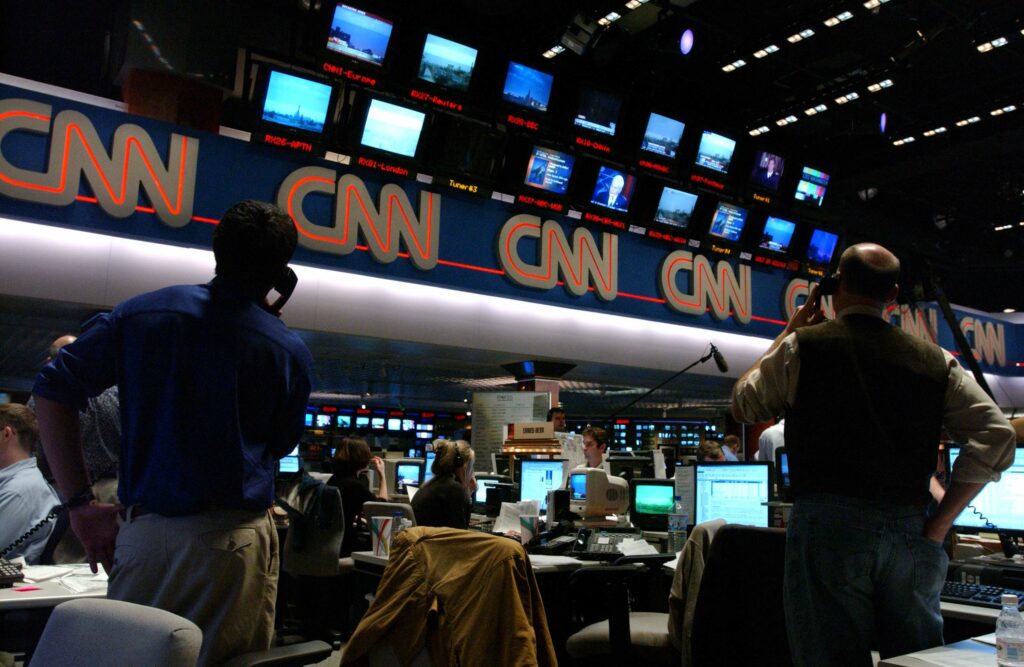
Courtesy of Turner Broadcasting
The station’s name has changed several times. After the company name changed to Turner Broadcasting System, Inc. in 1979, the station name became SuperStation WTBS. In 1987 the “W” was dropped from “WTBS.” Two years later SuperStation TBS became TBS Superstation. In 1991 “Superstation” was dropped but in 1996 was reinstated; it has been TBS Superstation ever since.
In 1996 Turner Broadcasting merged with Time Warner, creating an entertainment giant worth an estimated $6.5 billion. At that time, Turner gave up principal control of his properties, networks, and sports teams. Four years later, Time Warner merged with America Online (AOL), marking the largest corporate union in history, as well as the beginning of the end of Turner’s career in communications. Over the years Turner Broadcasting has grown rapidly and today consists of multiple networks and businesses, among them Cartoon Network (including Adult Swim), Turner Classic Movies, NASCAR.com, PGA.com, two radio networks, and a syndicated news service.
Turner Broadcasting—headed by chairman and chief executive officer Philip I. Kent since February 2003—is an industry model for providing news and entertainment to people around the world. In 2007 the company expanded its global audience through the acquisition of Claxson, a Latin American interactive pay television network headquartered in Buenos Aires, Argentina, and in Miami, Florida.







